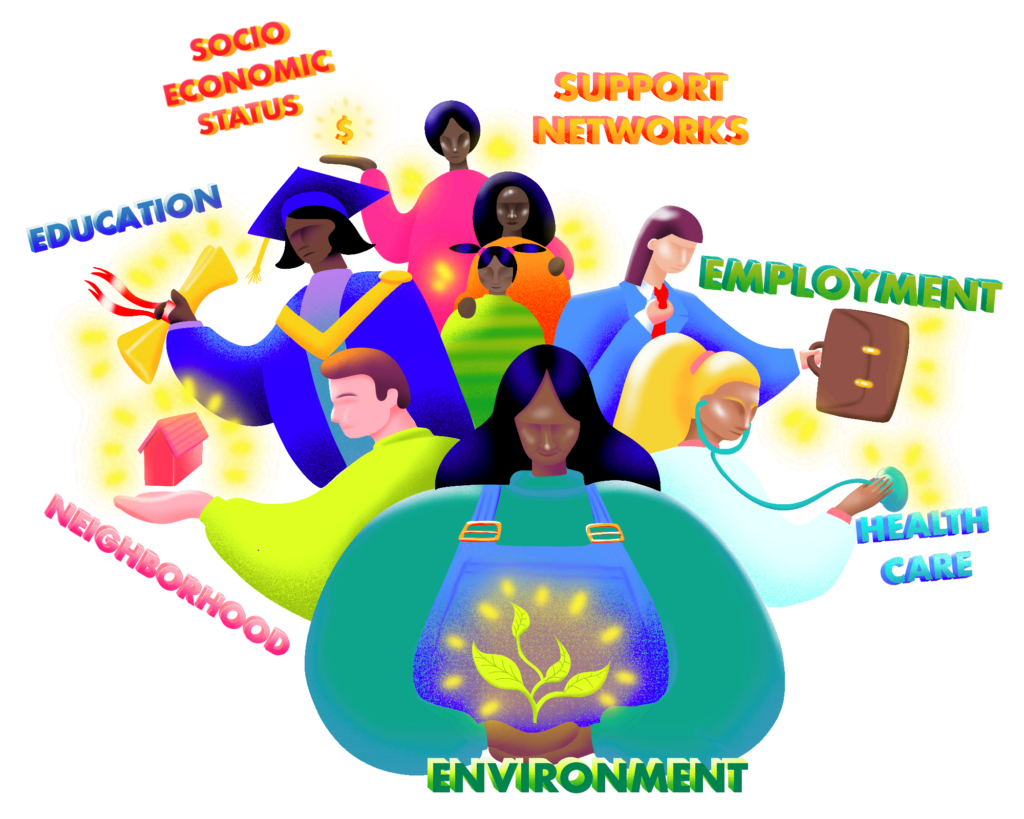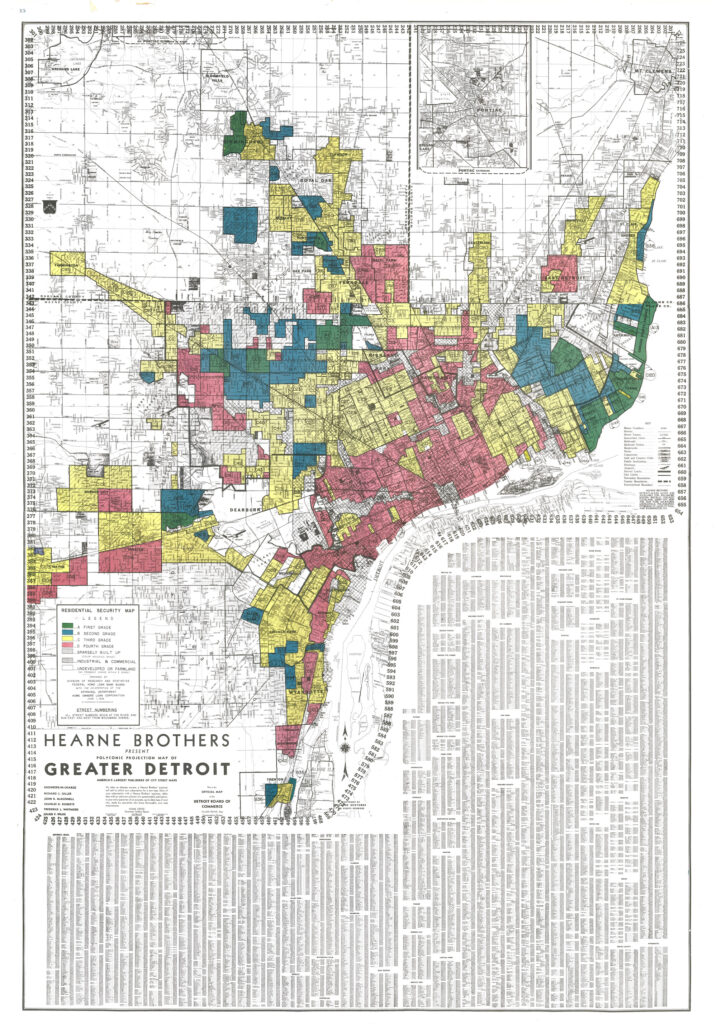Our health and lifespan aren’t just consequences of direct access to doctors and hospitals. They are influenced by and interconnected with factors that relate to where and how we live.
Researchers say that access to clinical care accounts for just 20% of the variation in health outcomes.
Much more important to our health is our environment, socio-economic status, education, neighborhood and housing, where and how we work, and the family and friends that make up our social support networks.
These factors are known as the social determinants of health.
Social determinants of health cause real and meaningful health differences among populations, and they’re ultimately linked to how long people live.
Average life expectancy across census tract in 2020. Source: National Center for Health Statistics
The above map shows the average life expectancy across Michigan. Areas shaded blue have a lower life expectancy and are concentrated in low-income communities of color like Detroit and Flint. Some rural areas in northern Michigan also have lower-than-average life expectancies.
Social and environmental stressors like food insecurity, polluted air and water, unsafe housing, and lack of access to education and quality health care are unevenly distributed across our region.
Wealthy suburbs, primarily white, tend to have fewer negative stressors and more of the resources needed to build a healthy life than low-income communities of color.
The highest average life expectancy in the region is among the white population in Oakland County at 80.1 years.
The lowest is among the Black population in Macomb County at 69.7 years..
In Detroit, life expectancy increased for white people between 2010 and 2020, but stayed the same for Black people.
But it’s not just about how long people live — it’s about how well they live and the quality of their health while they are alive.
On average, Detroiters self-report higher rates of most diseases than Michiganders as a whole. Asthma affects a higher proportion of people in Detroit than anywhere else in Michigan and the trend has gotten worse over time.
The social determinants of health are intersectional, meaning they relate to and amplify one another.
Healthcare practitioners and systems across the country increasingly recognize the crucial role of social determinants of health in producing health outcomes and integrating them into their healthcare delivery models.
For example, in 2021, Michigan Medicaid began requiring dental and medical contractors to address social determinants in their practices. And in 2022, the Michigan Department of Health and Human Services released a strategy for tackling social determinants of health across Michigan.


The environment is a critical component of the social determinants of health.
Low-income communities of color carry a high burden of exposure to environmental hazards that include pollution from industry and transportation, poor housing quality, and less access to quality food.
A primary cause of this inequity is historical redlining — a discriminatory government policy and practice concerning housing and lending that began in the 1930s.
Redlined neighborhoods, often those predominantly inhabited by racial minorities, were systematically denied access to financial services, insurance, and investment opportunities based on their geographical location, typically marked in red on maps.
A comparison of Detroit’s redline map and the map of average life expectancy shows a clear correlation.
Redlining established a foundation for the geographic racial segregation and socioeconomic disparities we see today.
This segregation also results in environmental injustice, as redlined communities often face disproportionate exposure to environmental hazards, pollution and a lack of access to green spaces and resources.
Learn more about how the lives of Detroiters are impacted by air, housing, and food security, how those factors relate to social determinants of health and how community interventions in those areas are making a difference.
